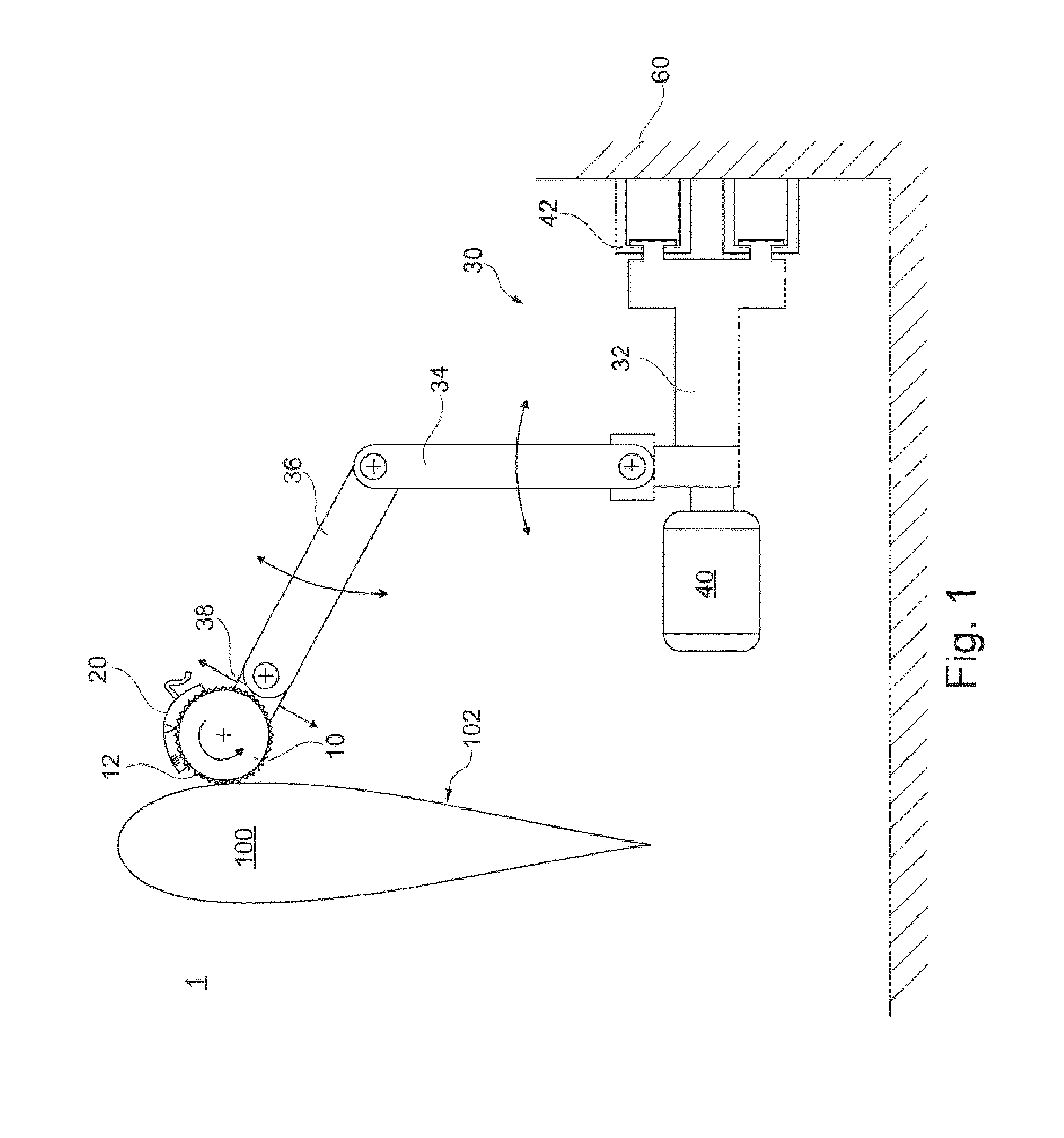Grinding device for machine based grinding of rotor blades for wind energy systems
a technology of wind energy system and grinding device, which is applied in the direction of grinding machine components, manipulators, grinding machines, etc., can solve the problems of uneconomical use of robots and inability to conventionally grind by hand, and achieve the effect of increasing effort and speeding up the execution speed
- Summary
- Abstract
- Description
- Claims
- Application Information
AI Technical Summary
Benefits of technology
Problems solved by technology
Method used
Image
Examples
Embodiment Construction
[0040]In the following preferred embodiments of the invention are described with reference to the figures. Single features of the herein described embodiments can be combined with other embodiments of the invention.
[0041]FIGS. 1 and 2 show a front view and a top view of a grinding device 1 for machine-based grinding of rotor blades 100. In FIG. 1 an industrial robot 30 is arranged on the right hand side of the rotor blade 100 at the wall 60 of a building, wherein it is possible to move the industrial robot 30 in the longitudinal direction. The industrial robot 30 can move by means of an undercarriage 32 at the wall 60 along a longitudinal axis L of the rotor blade 100 at wall tracks 42. The industrial robot 30 is only shown in a symbolic manner and can be every industrial robot that is appropriate for the task that is described in the following. As shown, the industrial robot 30 comprises an undercarriage 32, a drive motor 40, a first arm 34, that is attached to the undercarriage 32...
PUM
 Login to View More
Login to View More Abstract
Description
Claims
Application Information
 Login to View More
Login to View More - R&D
- Intellectual Property
- Life Sciences
- Materials
- Tech Scout
- Unparalleled Data Quality
- Higher Quality Content
- 60% Fewer Hallucinations
Browse by: Latest US Patents, China's latest patents, Technical Efficacy Thesaurus, Application Domain, Technology Topic, Popular Technical Reports.
© 2025 PatSnap. All rights reserved.Legal|Privacy policy|Modern Slavery Act Transparency Statement|Sitemap|About US| Contact US: help@patsnap.com



